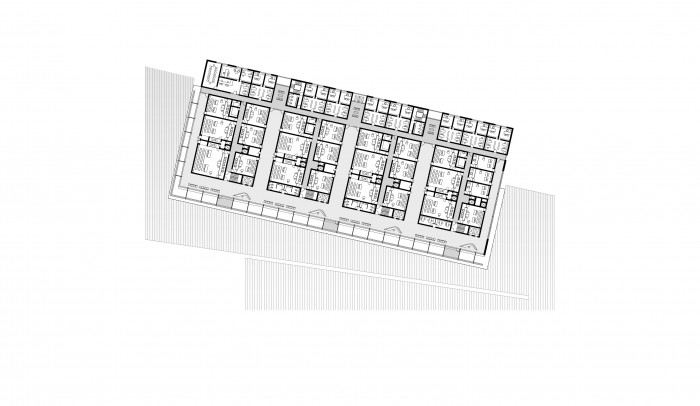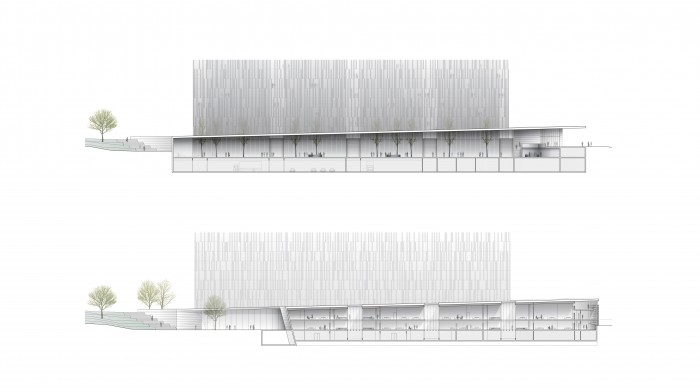The court building in Jerusalem houses all the judiciary levels except the Supreme Court, and contains 113 courtrooms and 135 judges’ chambers. The site allocated for the building is a distinctive meeting point of diverse urban fabrics, building styles, and urban activities. The design of the court building has to connect and bridge among the host of diverse design languages of the buildings around it as well as to create a distinctive language of its own. The building needs to stand out as a representative of the judiciary authority but should also blend in with the urban fabric, in modest, human, and non-patronizing dimensions. The court building is designed as a spatial composition in which a vertical rectangular prism, containing the judicial wing, penetrates into a horizontally laid-out prism, with a sloping upper face, housing the judiciary services and the foyer. The vertical prism is divided into two vertical slices, a broad one containing the courtrooms wing and a narrow one containing the judges’ chambers wing. The building’s design as a simple, minimalistic composition, with each prism housing distinct activities, is in the modern architectural tradition that calls for form to follow function. The logic behind this principle is not merely formal; rather, it aims to point to functional, technical and economic efficiency.
Client: Government
Area: 50,000 sq.m















